Key takeaways:
- Understanding stray cats involves empathizing with their struggles, often stemming from abandonment or mistreatment.
- Recognizing signs of trauma in stray cats, such as fear and physical neglect, is crucial for fostering compassion.
- Supporting traumatized cats requires creating safe spaces and engaging them through positive interactions like play.
- Community education and support networks can significantly improve the welfare of stray cats through shared resources and awareness.
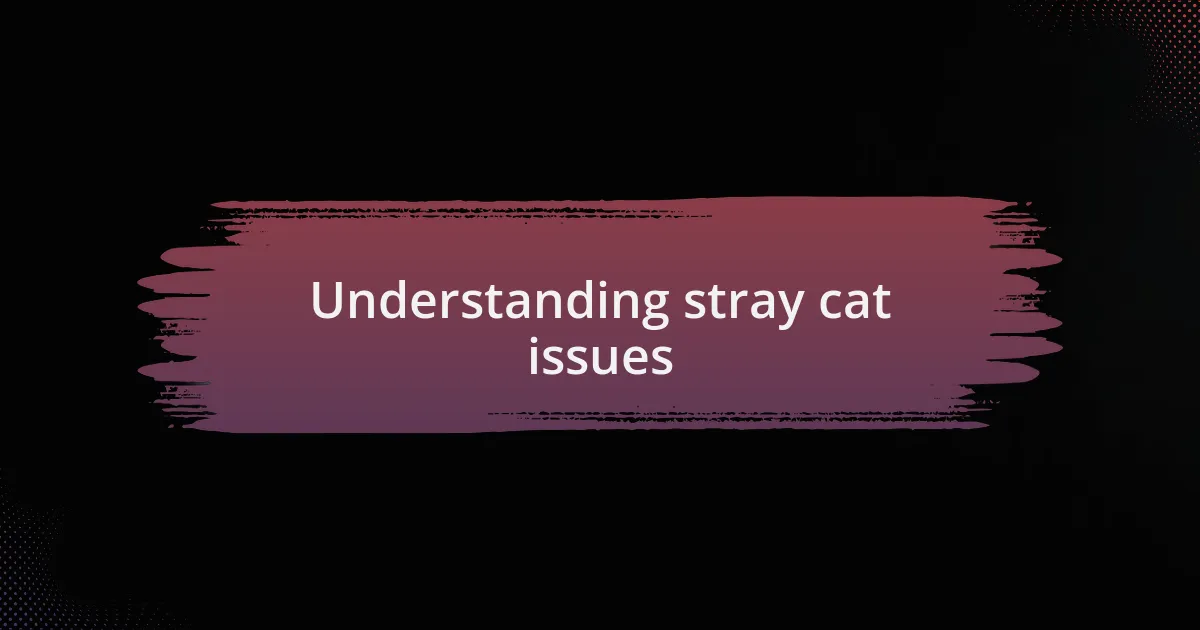
Understanding stray cat issues
Stray cats are often seen as a nuisance, but they have their own stories of struggle and survival. I remember the first time I encountered a group of strays near my neighborhood; their wide eyes spoke volumes about fear and mistrust. What leads these cats to roam alone, facing hunger and harsh weather? The reality is that many are abandoned or lost pets, and understanding their plight can shift our perspective from annoyance to empathy.
One significant issue with stray cats is their health. During my early days of educating others about these animals, I discovered that many stray cats suffer from untreated injuries or diseases. Seeing a cat limping in pain was a turning point for me; it made me wonder how many of these animals silently endure suffering without any help. Why do we often overlook their needs when a simple act of kindness could change their lives?
Another concern is the impact of stray cat populations on local wildlife. While I don’t want to dismiss the beauty of nature, I can’t help but question how we can strike a balance. Should we prioritize the well-being of these cats, or should our focus be on protecting native birds and small mammals? This ongoing debate highlights the complexity of stray cat issues, urging us to consider the bigger picture and our role in it.
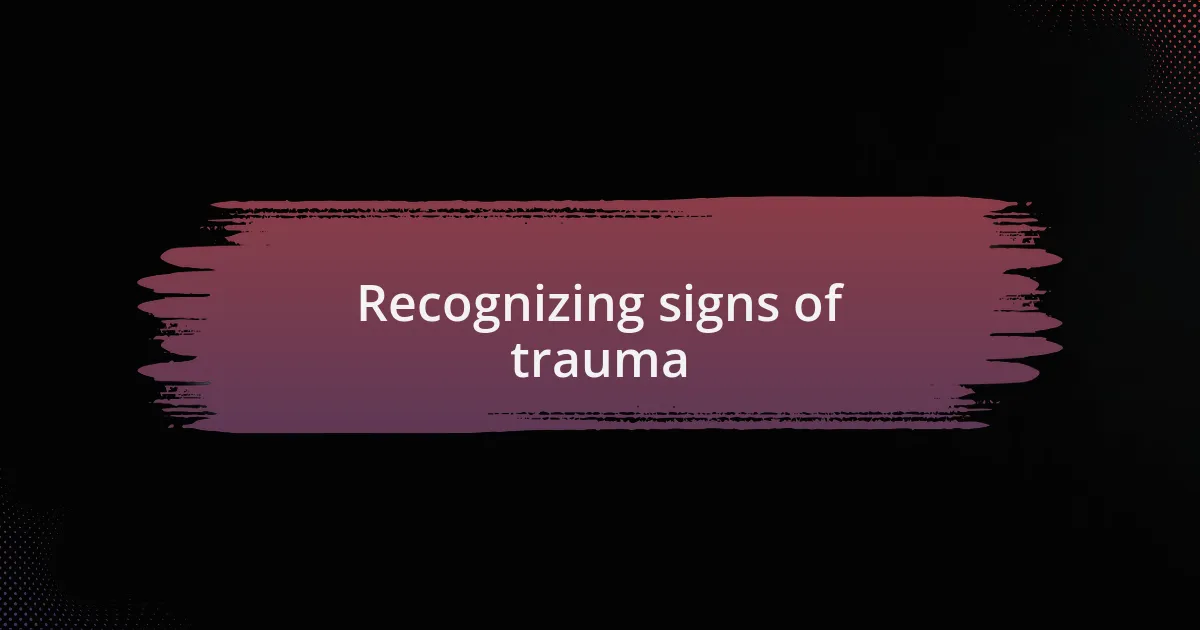
Recognizing signs of trauma
Recognizing the signs of trauma in stray cats can be subtle yet revealing. For example, when I first observed a once-friendly stray cat suddenly acting skittish and hiding at the slightest sound, it struck me that this behavior spoke volumes about its past. These signs of fear and anxiety are often rooted in traumatic experiences, possibly from mistreatment or abandonment.
Physical signs often accompany emotional distress. I encountered a cat with matted fur and sunken eyes, clinging to survival while clearly suffering. Such indicators of neglect or health issues can’t be ignored; they serve as a reminder that every stray carries a history that may be filled with hardship and fear.
Additionally, changes in a cat’s social behavior can signify trauma. I remember a particularly wary cat that would only eat when no one was watching. Why would a creature so instinctively drawn to companionship choose solitude instead? It is vital to understand that this reluctance to trust is a common response for many strays, shaped by their difficult pasts. By recognizing these signs, we can begin to foster an environment of compassion and understanding.
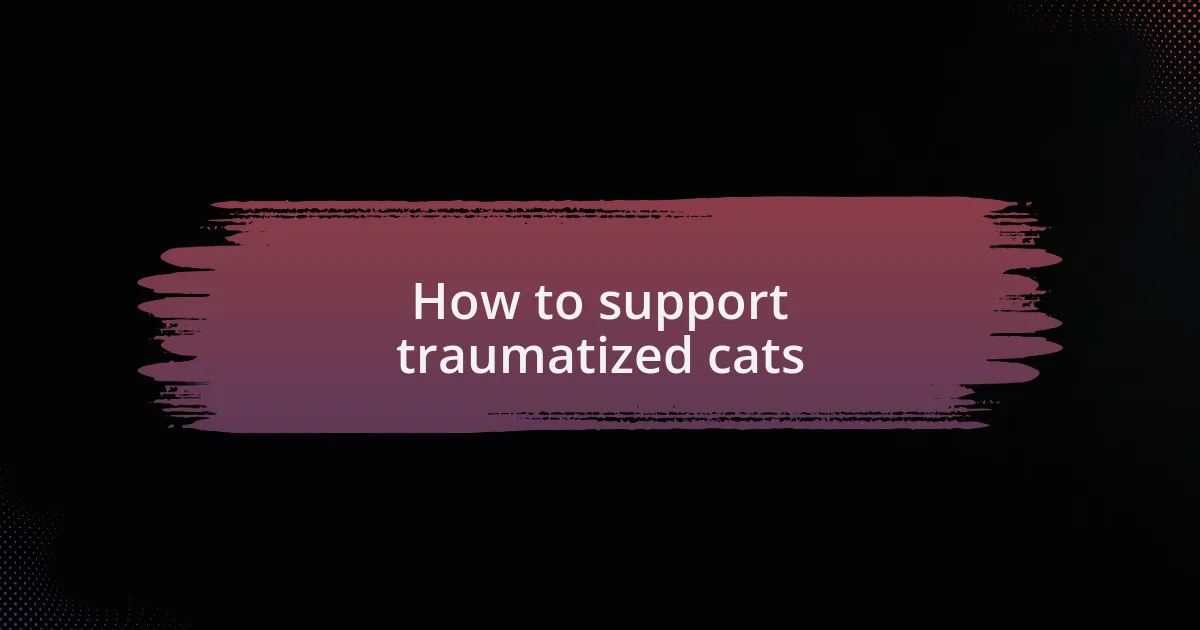
How to support traumatized cats
Supporting traumatized cats requires patience and a gentle approach. I once worked with a cat who would flinch at the slightest touch. I learned that offering treats held out on my palm, instead of forcing interaction, allowed her to feel secure. This gradual, trust-based method opened doors to a deeper connection.
Creating a safe space is essential for these vulnerable cats. I remember setting up a cozy corner in my home with soft blankets and hiding spots for a shy tabby. The moment she found her sanctuary, I noticed her slowly emerging to explore her surroundings. It was a beautiful reminder that providing an environment that respects their need for safety can help facilitate their healing journey.
Engagement through play can also be a breakthrough. I introduced a feather toy to another frightened cat, who had been reluctant to leave his hiding spot. As he pounced on the toy, you could almost see his confidence grow. Have you ever witnessed such a transformation? It’s moments like these that affirm the power of play and connection in helping them regain their spirit.
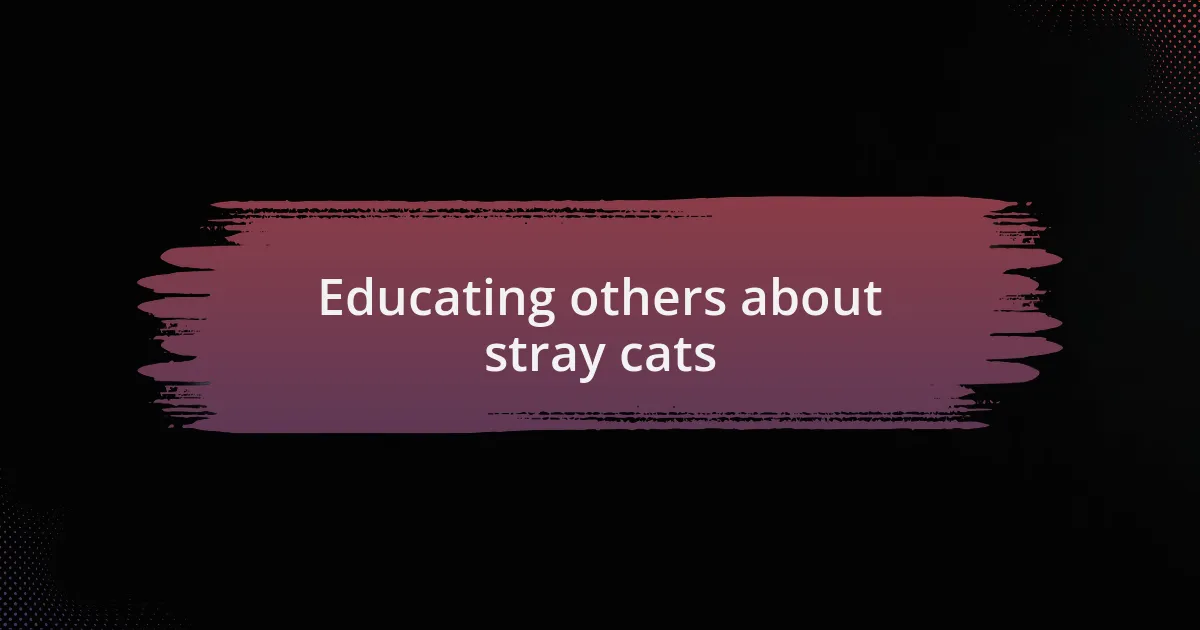
Educating others about stray cats
Educating others about stray cats is a passion I’ve cultivated over the years. I remember once volunteering at a local shelter, where I noticed many visitors were unaware of the stray cat population. I found that sharing simple facts, like the importance of spaying and neutering to prevent overpopulation, sparked genuine interest. Have you ever seen someone’s perspective shift when they understand the bigger picture? It’s enlightening.
I often conduct informal workshops in my community, where I discuss the behaviors of stray cats and how to approach them safely. Sharing my own experiences, like how I used to approach a group of strays in my neighborhood with caution, helps people relate to the topic. It felt rewarding when participants began to understand that these cats are not just feral; they have stories, emotions, and deserve compassion.
Visual storytelling also plays a crucial role in education. I’ve created pamphlets with photos of stray cats, along with their recovery stories, to illustrate the impact of community involvement. When I see people moved by these visuals and motivated to help, it reinforces my belief that education can spark change. Isn’t it amazing how a picture can evoke empathy and drive action?

Personal stories of healing
In the journey of healing, I found that the act of caring for stray cats can teach us about resilience. A few years ago, I took in a battered kitty named Bella. Watching her regain trust in humans reminded me that healing doesn’t happen overnight; it takes time, patience, and unconditional love. Have you ever witnessed a transformation like that? It’s a profound experience.
Each story of a stray cat I encounter feels like a chapter in a collective healing narrative. Just last summer, I met a gentleman who shared how fostering a pair of rescued kittens helped him cope with his own loss. He found solace in nurturing their playful spirits, realizing that healing often happens through connection—with both animals and people. Isn’t it fascinating how our experiences can intertwine to create shared pathways to recovery?
I often reflect on my own healing through these experiences with stray cats. One cold winter night, I rescued a stray, who later became my loyal companion. This bond taught me that healing often comes in unexpected forms. Have you ever experienced a furry friend guiding you through tough times? Their presence can mend wounds we didn’t even know we had.
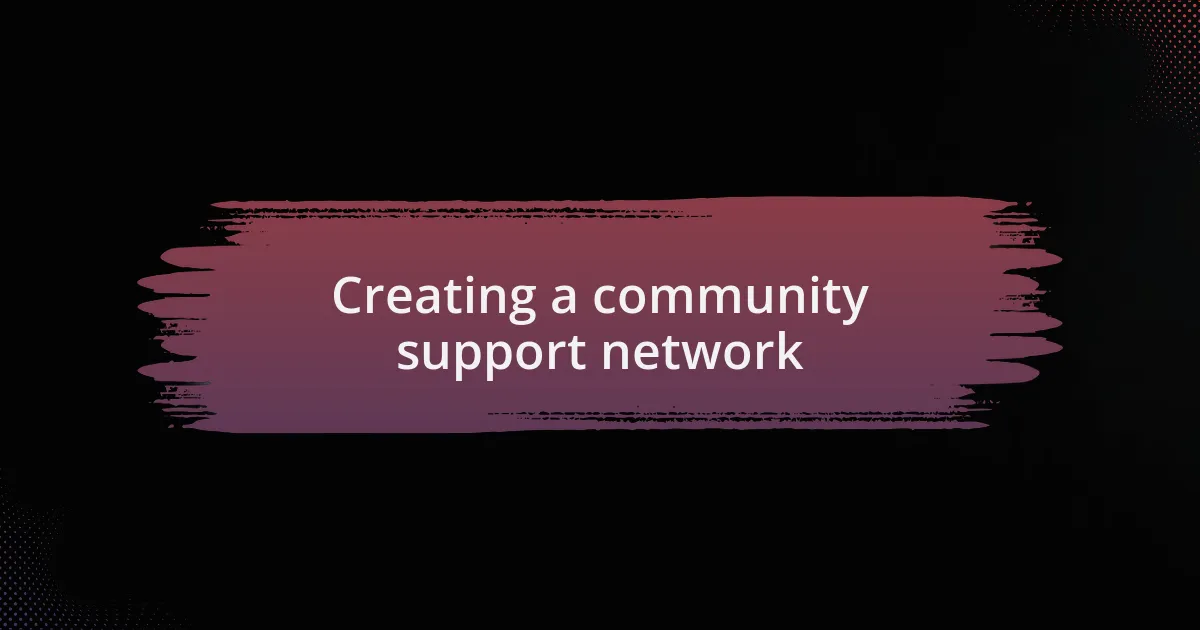
Creating a community support network
Creating a community support network involves bringing together people who share a common goal: caring for stray cats while fostering a sense of belonging. I remember the first time I attended a local meeting organized by a group of cat lovers; it was invigorating to see strangers unite over a shared passion. Have you ever felt that rush of connection when meeting like-minded individuals? It can be incredibly empowering.
In my experience, forming relationships with others in the community can lead to a wealth of resources. I recall how one volunteer introduced me to local veterinarians willing to provide discounted services for stray cats. This not only relieved financial burdens but also fostered collaborative efforts to improve the lives of these animals collectively. Imagine the difference we can make when we unite our resources and knowledge!
Additionally, leveraging social media has allowed communities to expand their reach, enabling us to connect with potential supporters far and wide. I once posted about a need for supplies for a local TNR (trap-neuter-return) program, and within hours, donations flooded in from neighbors I had never met. It’s humbling to witness how a simple post can galvanize a community into action and bring people together for a cause. How amazing is it to think that technology can bridge gaps and create a network of support?